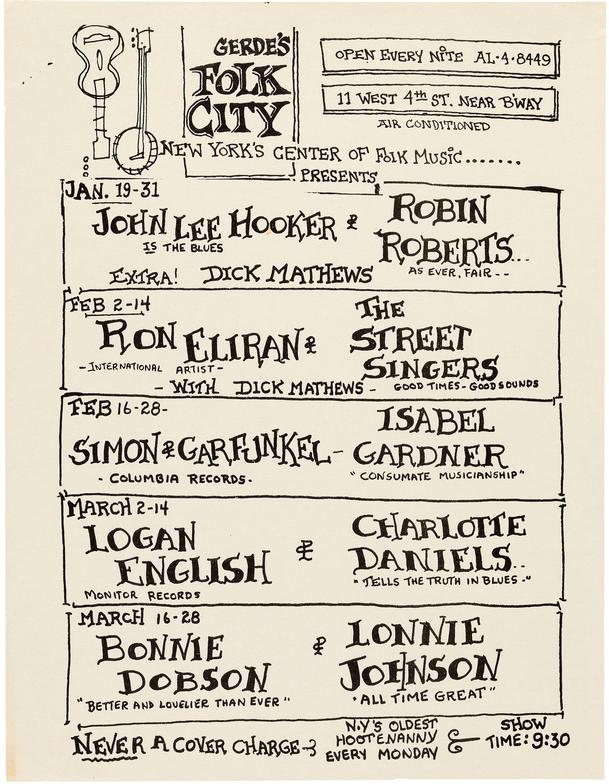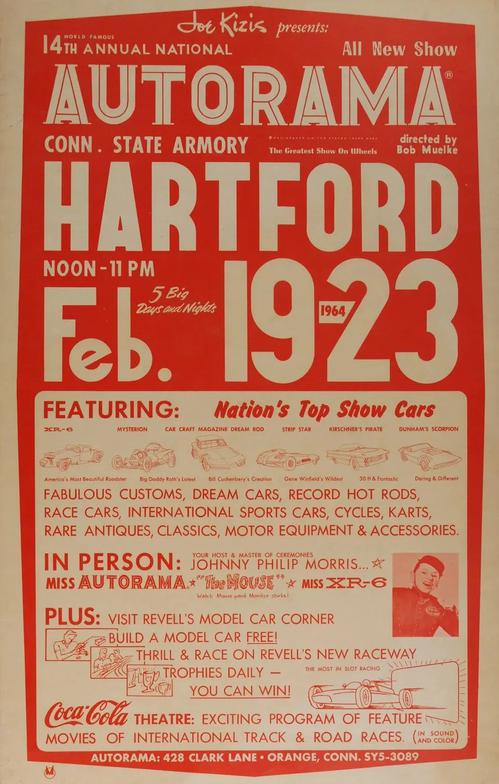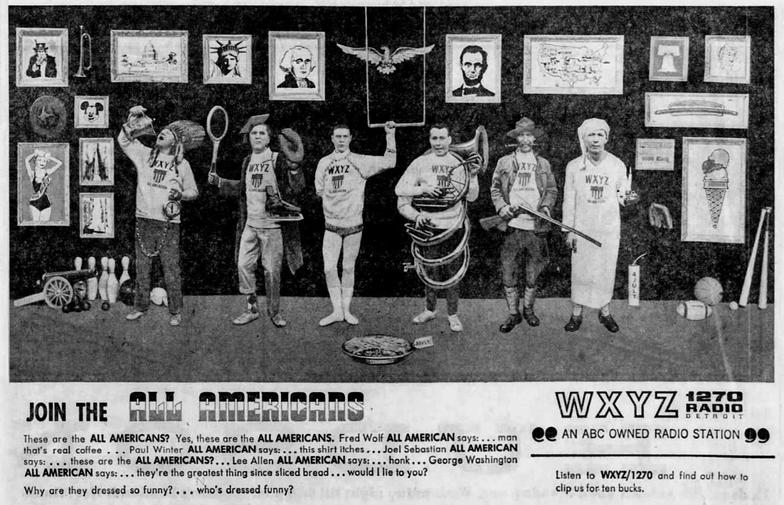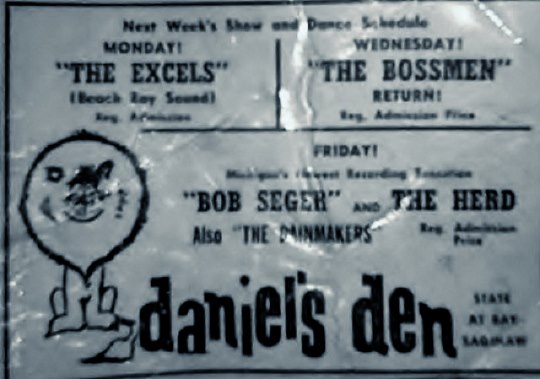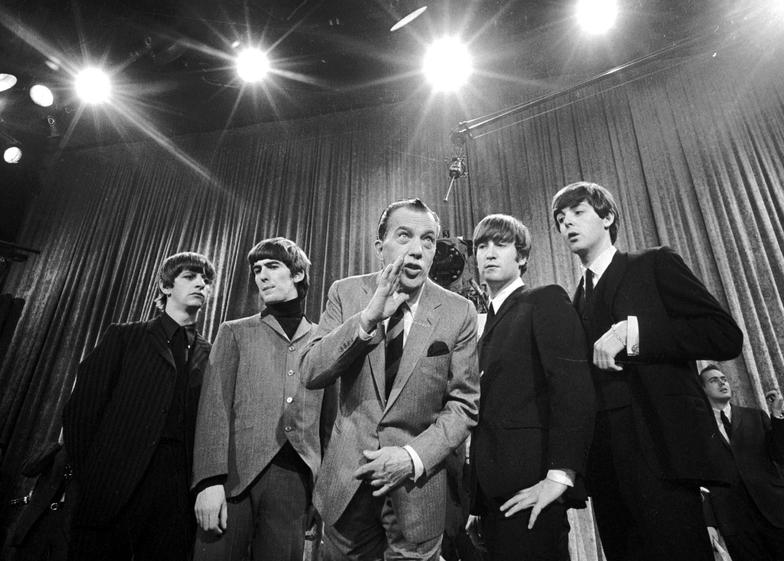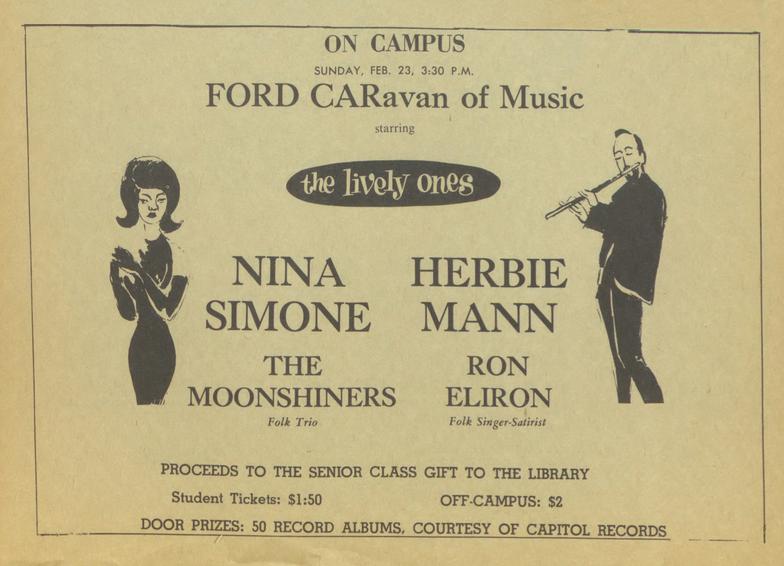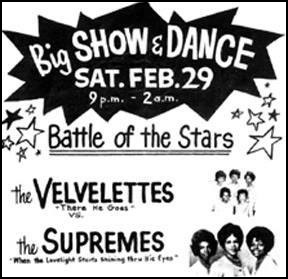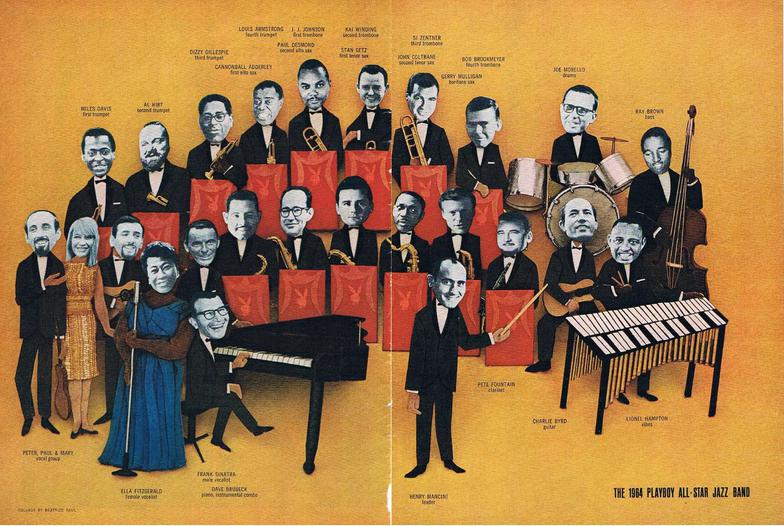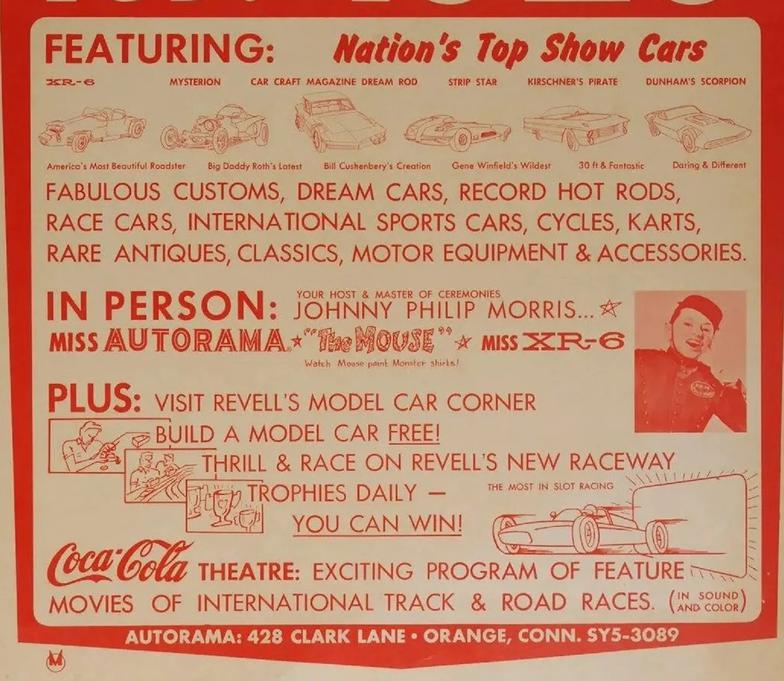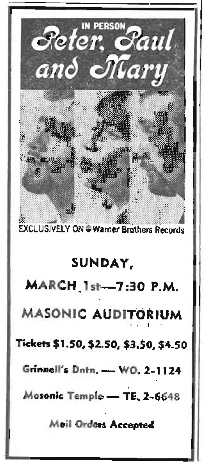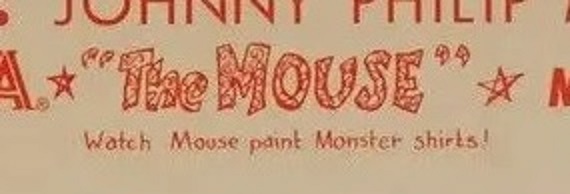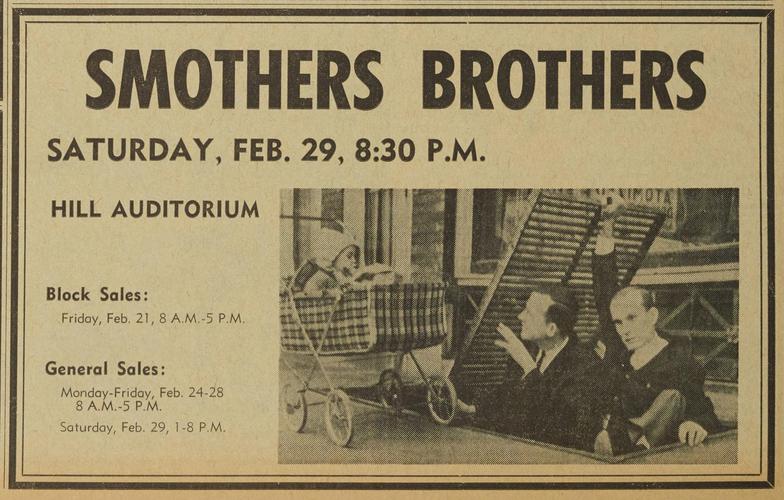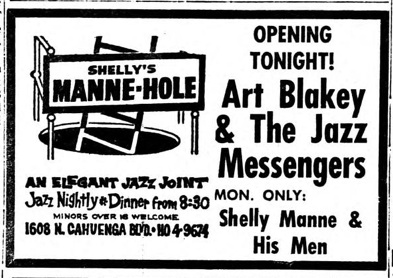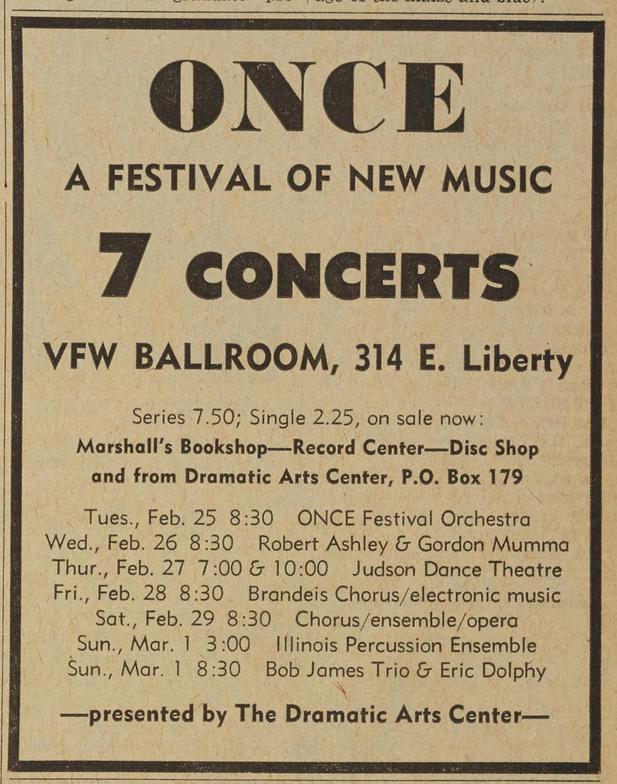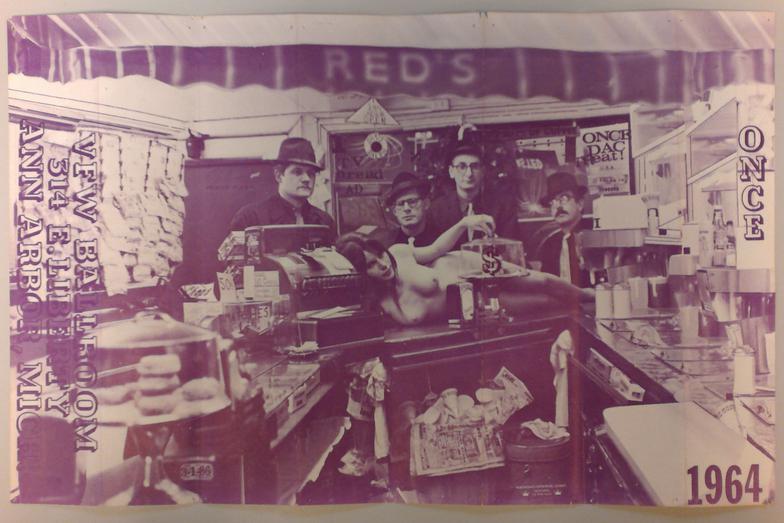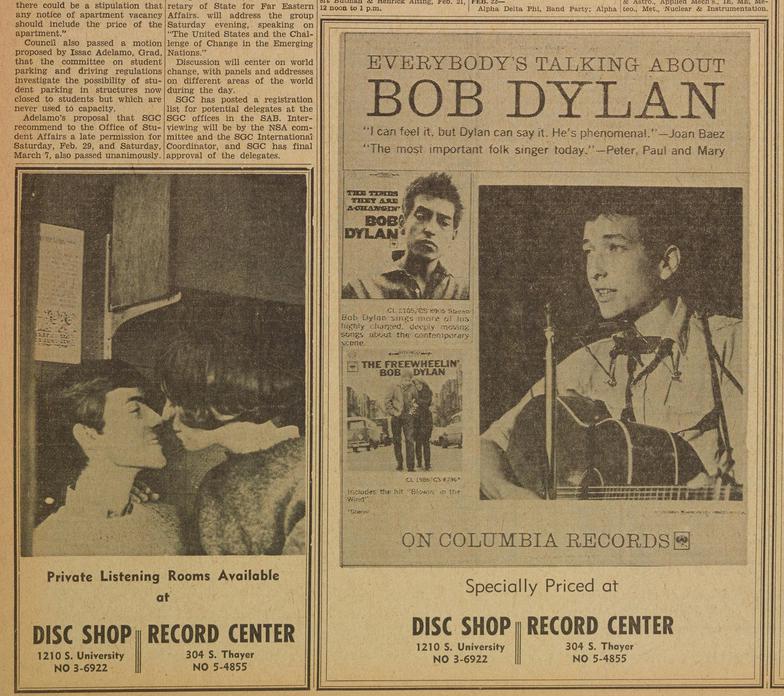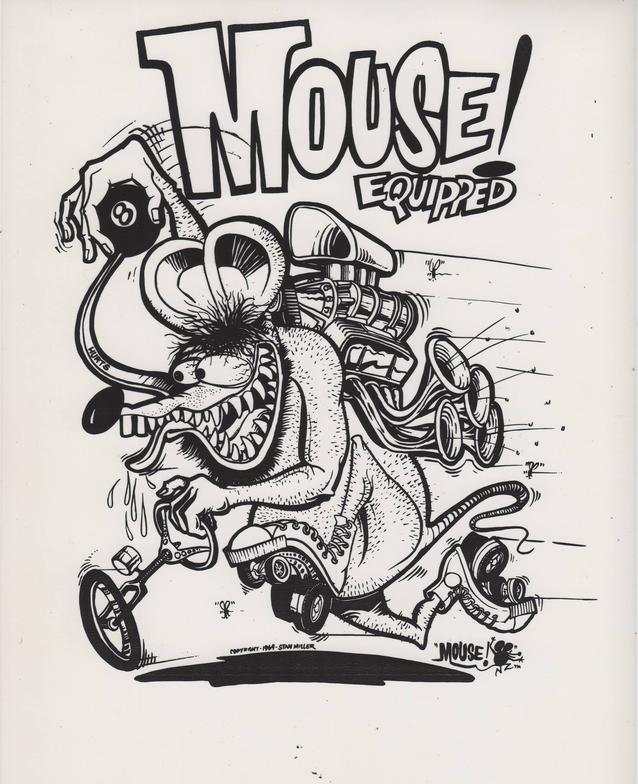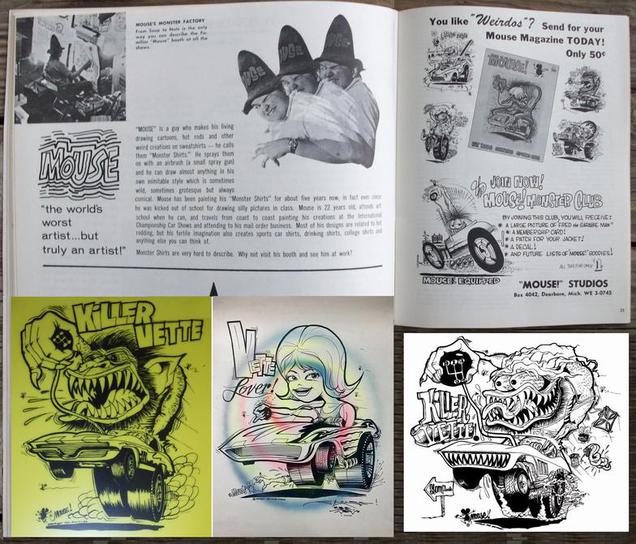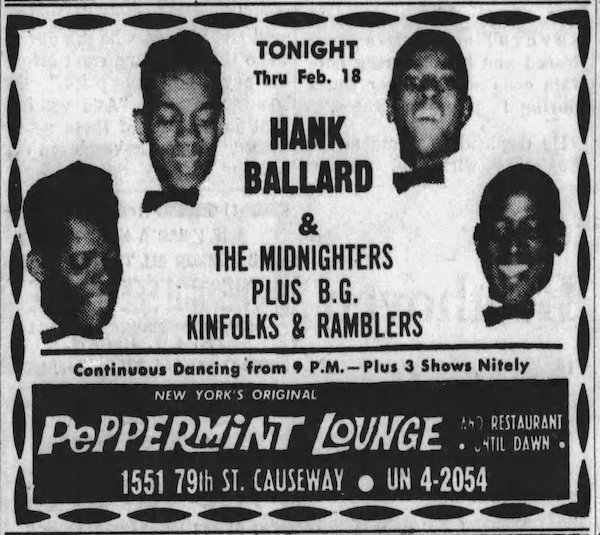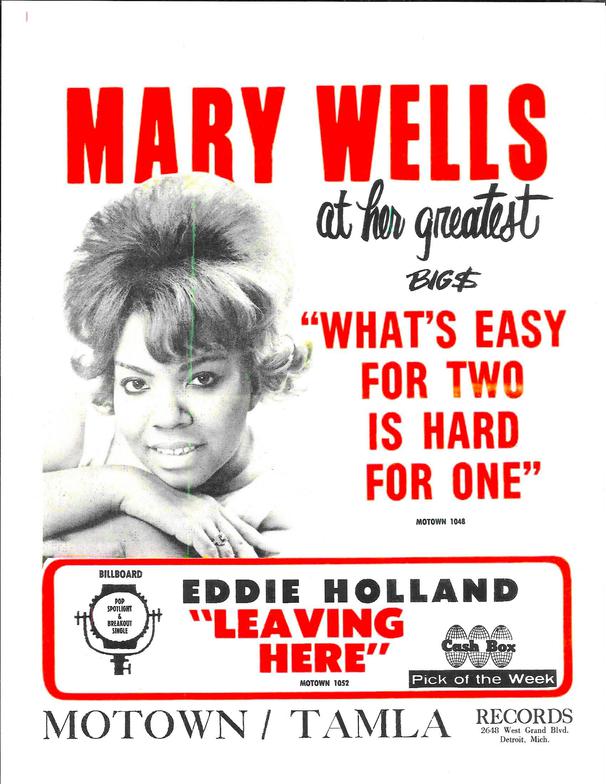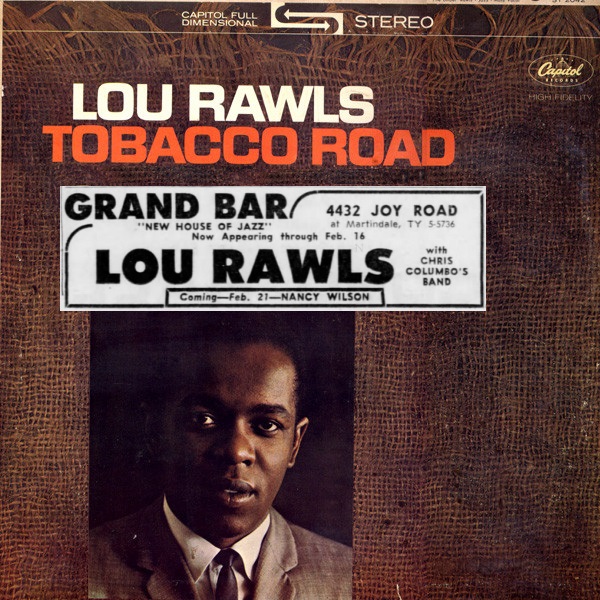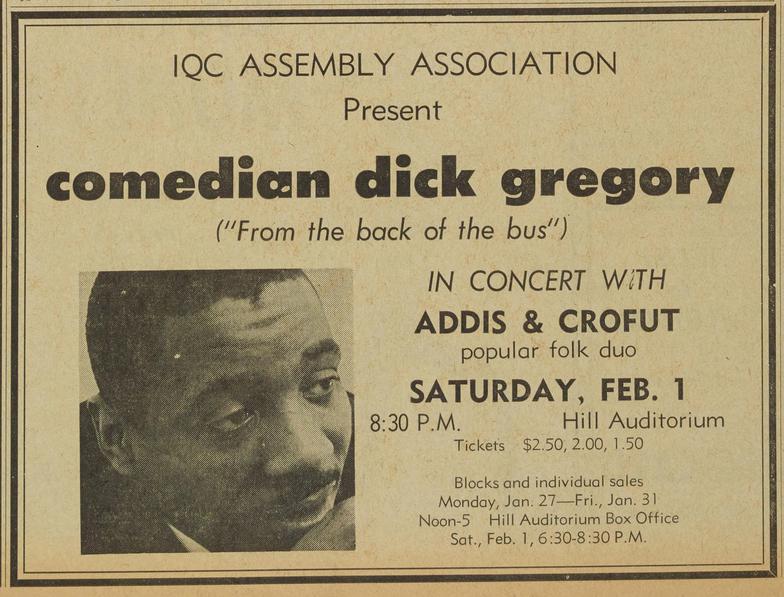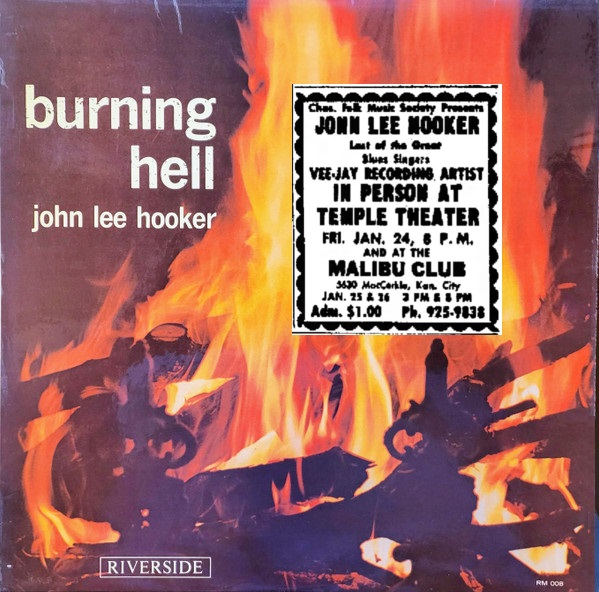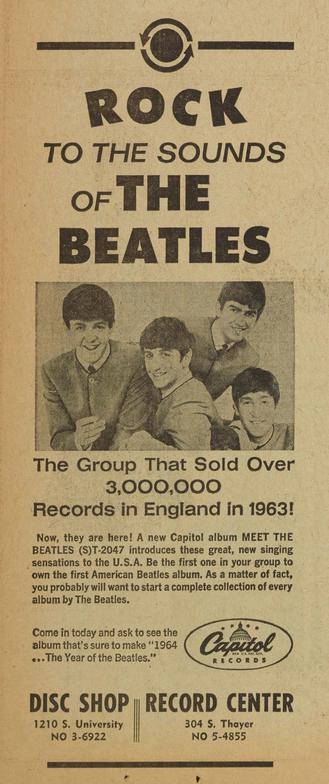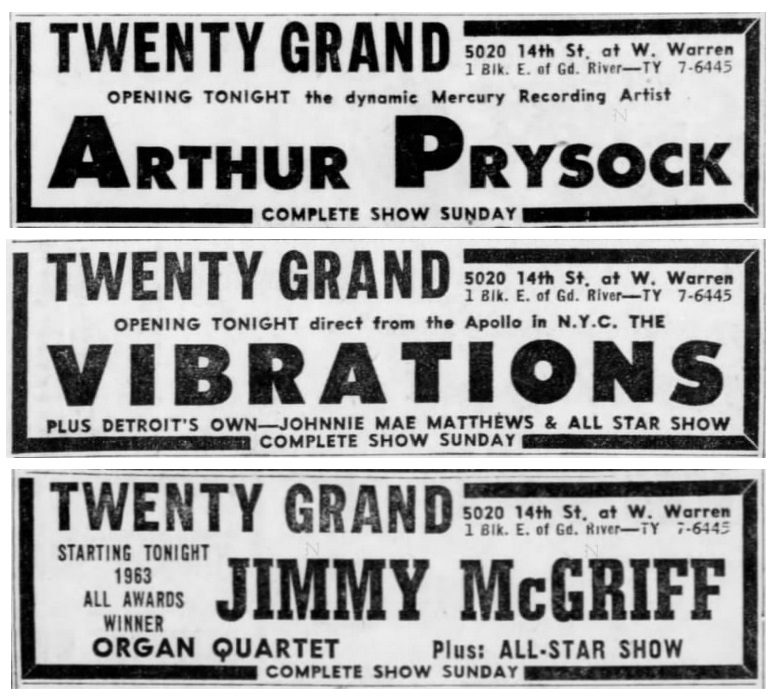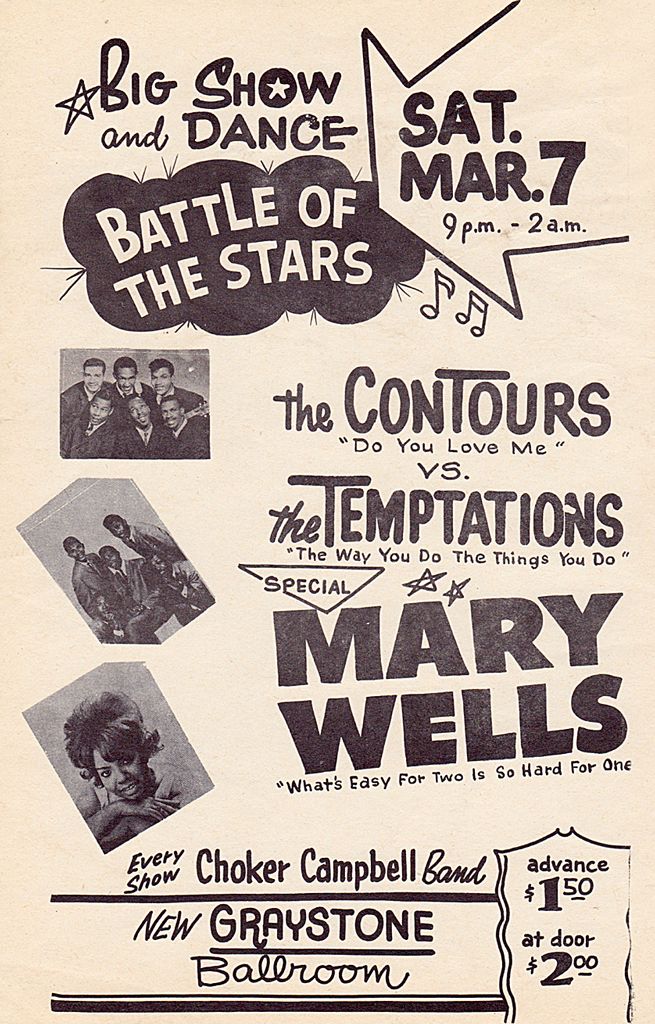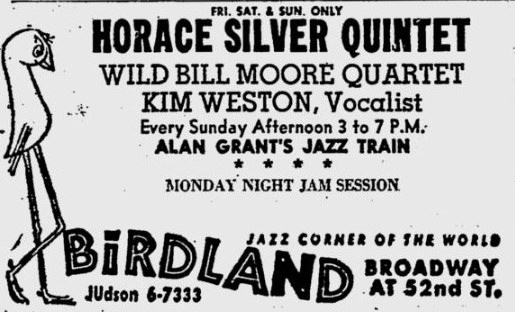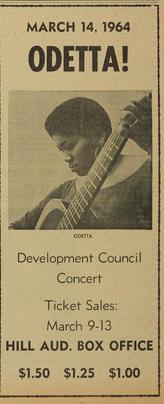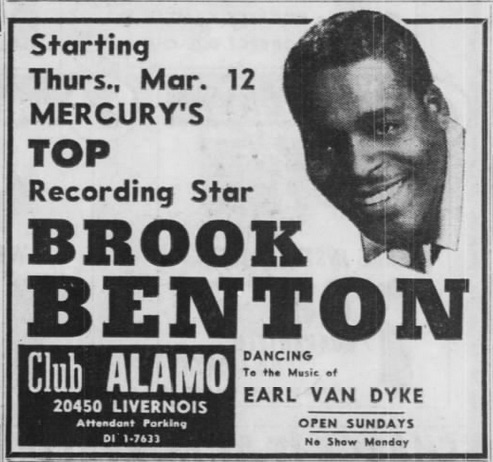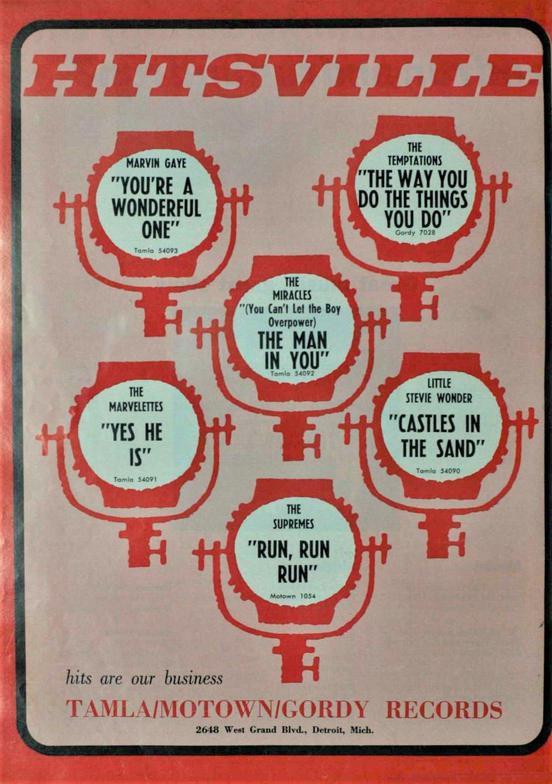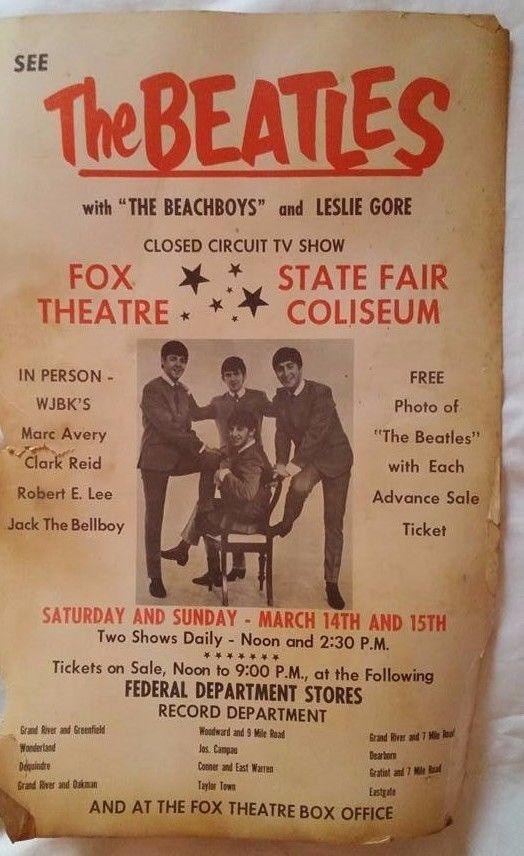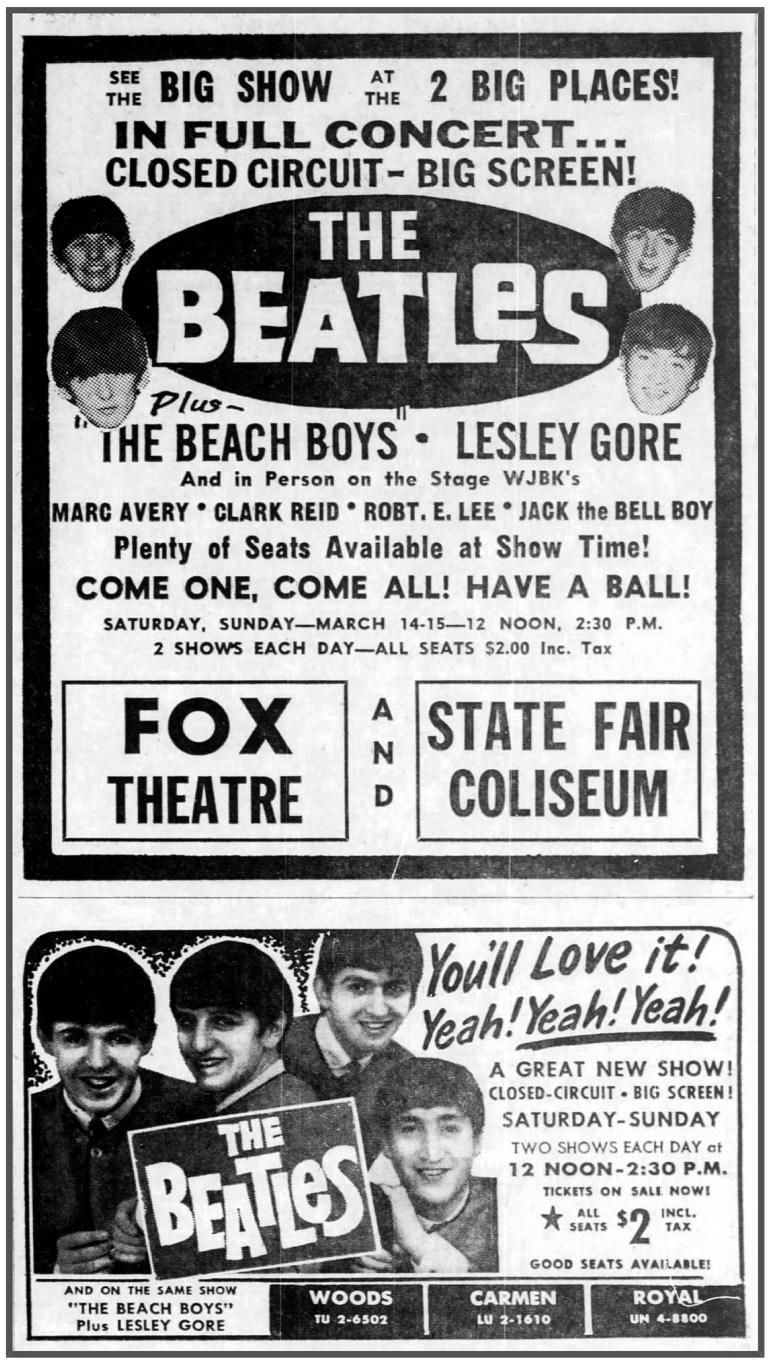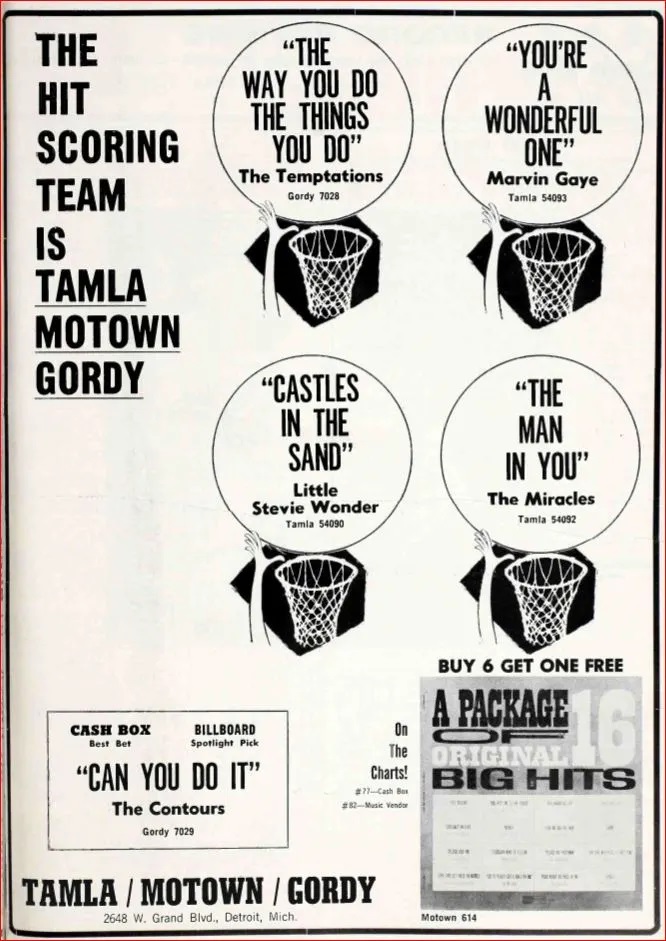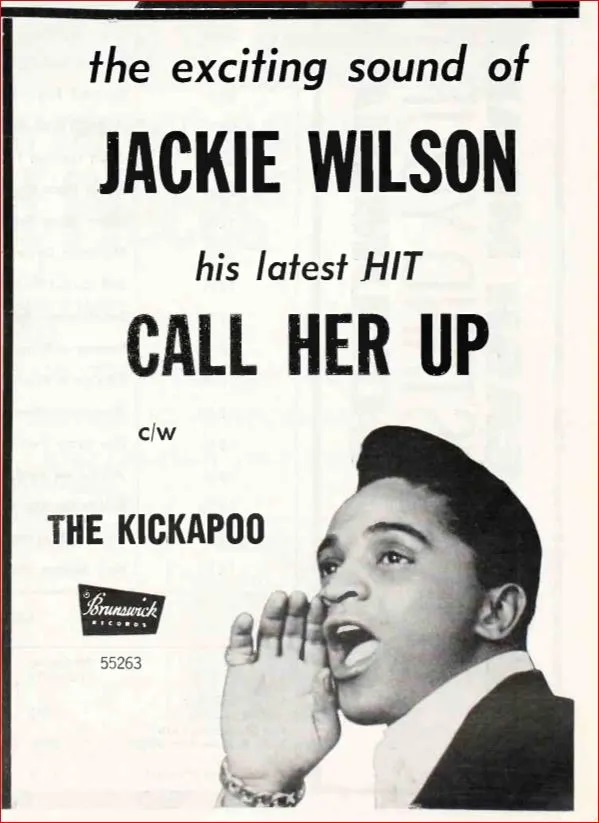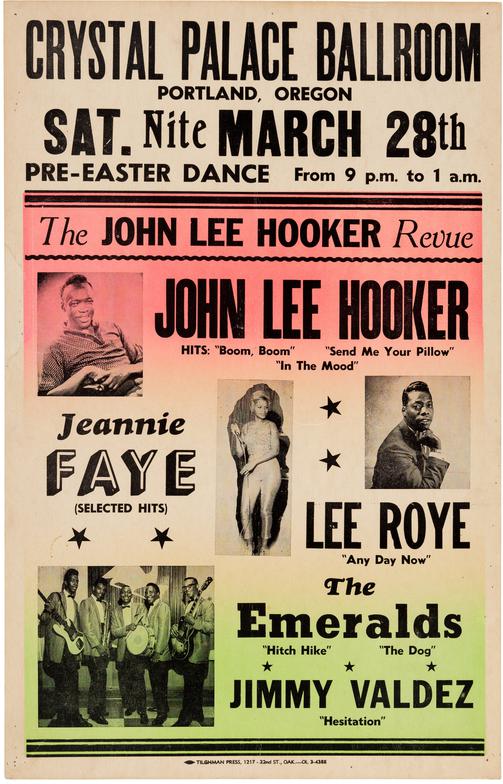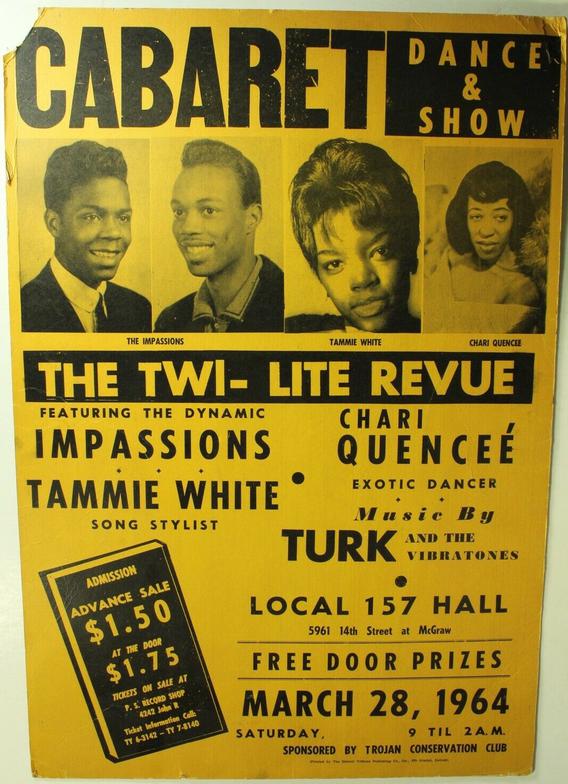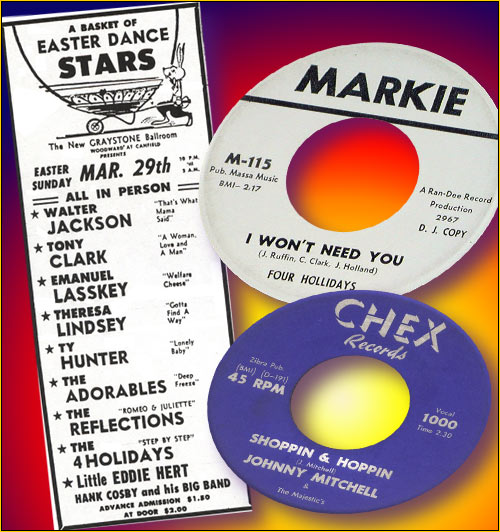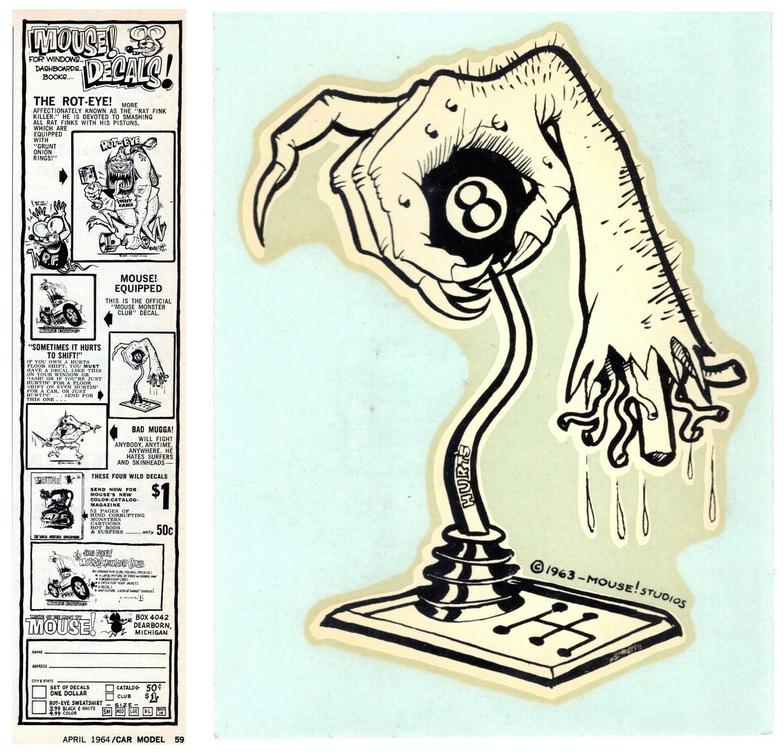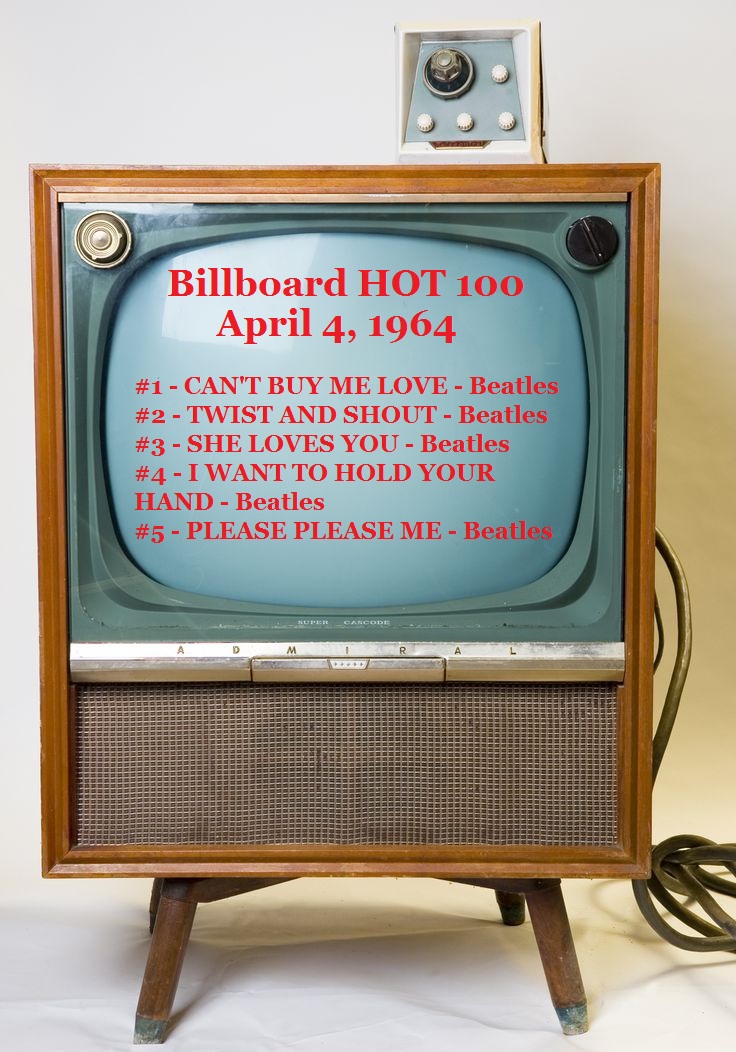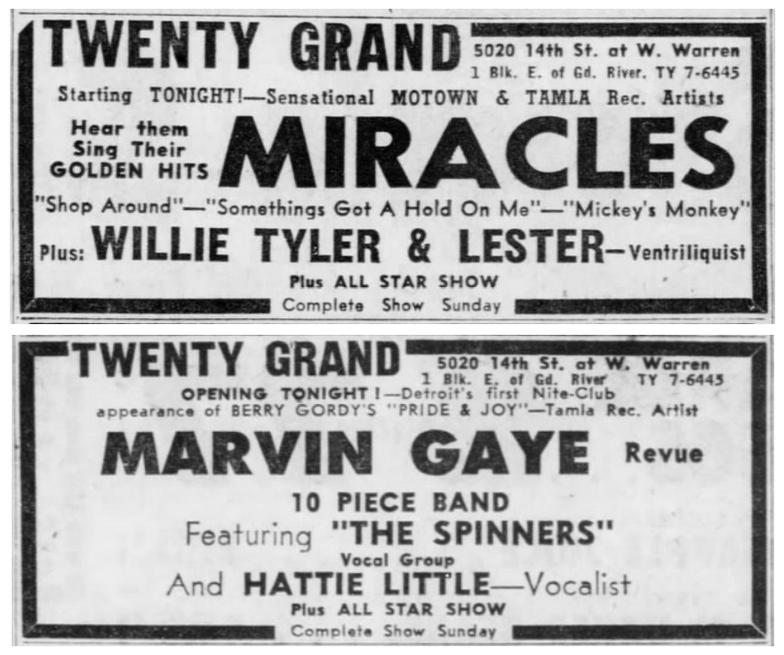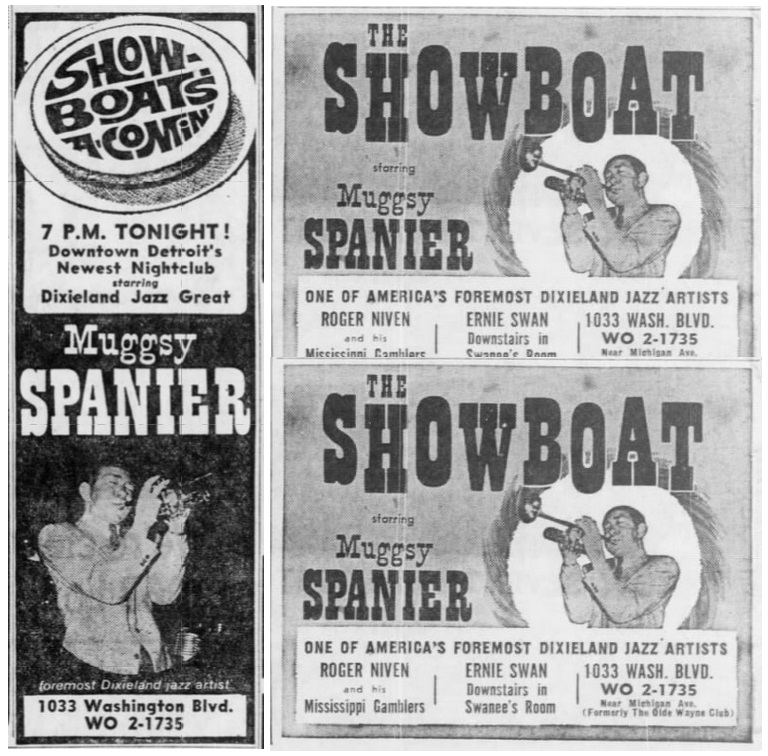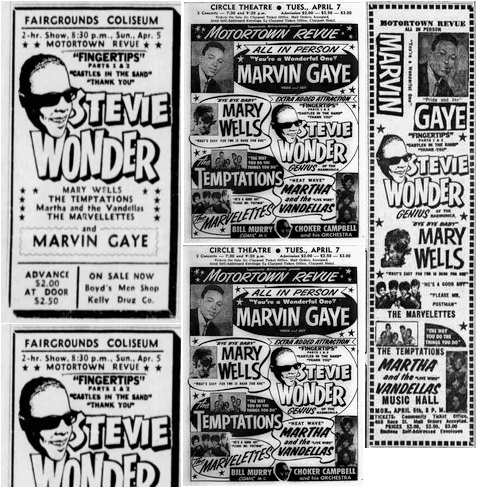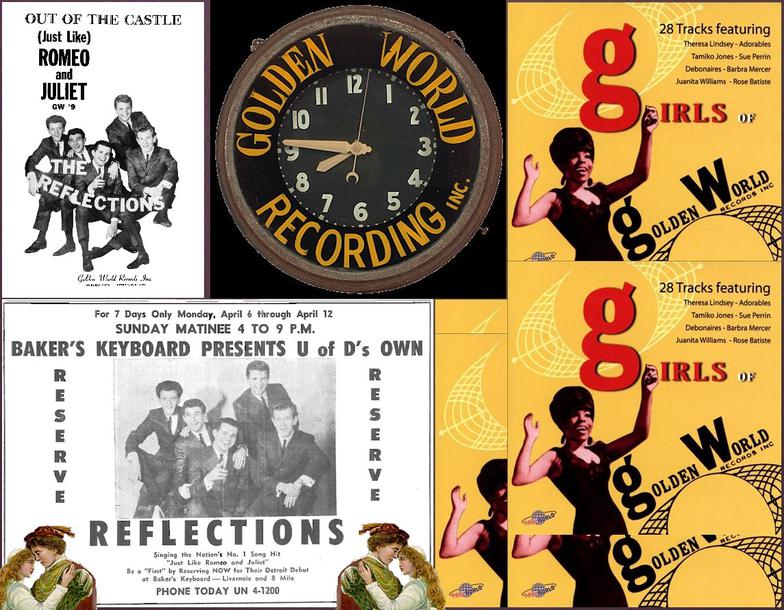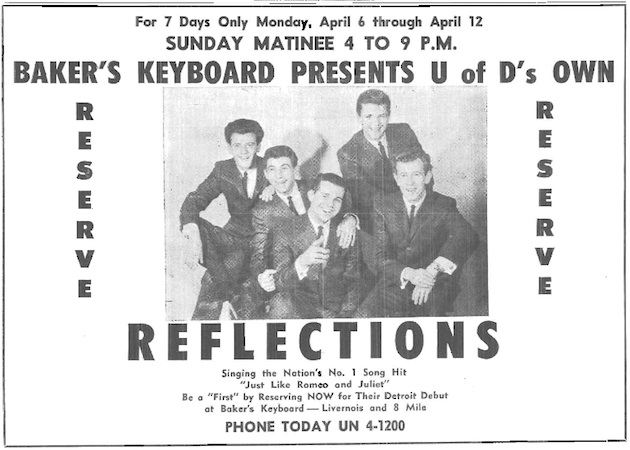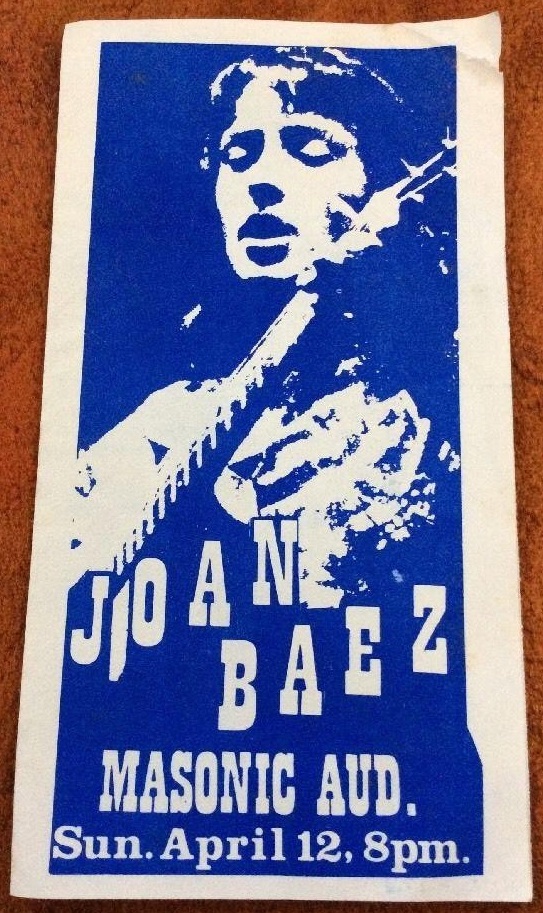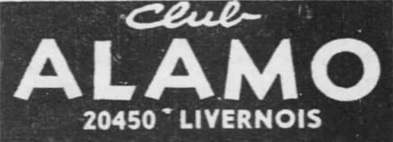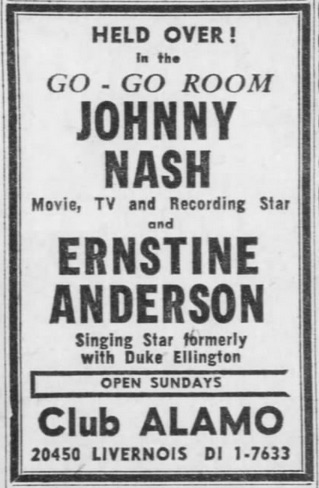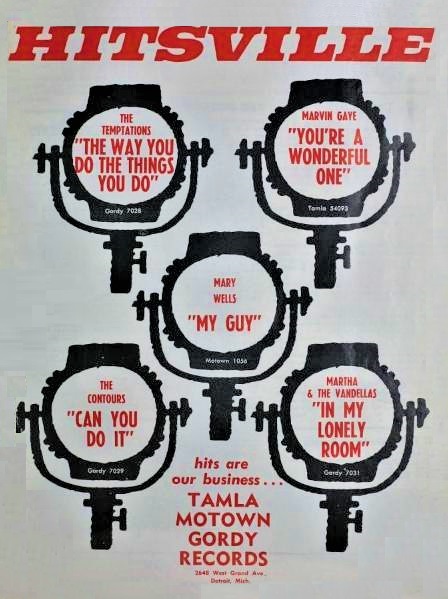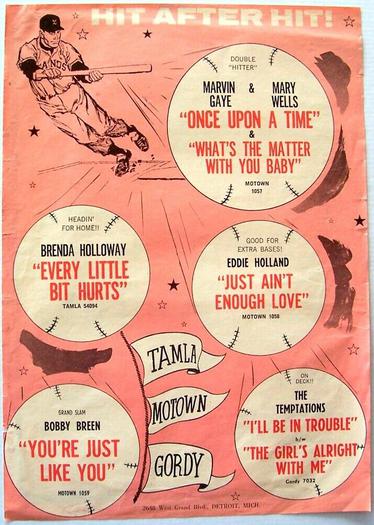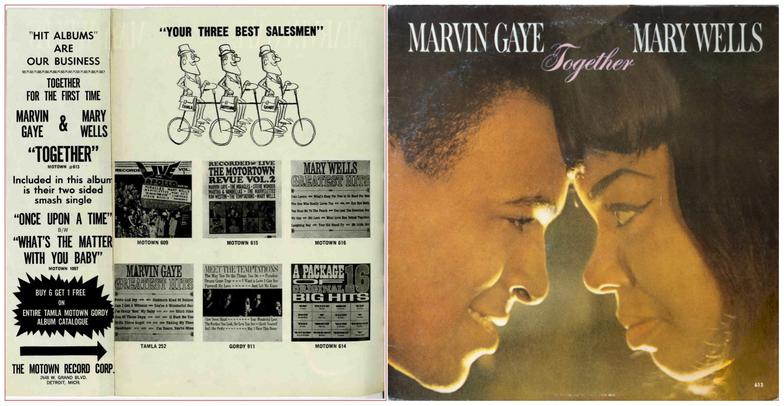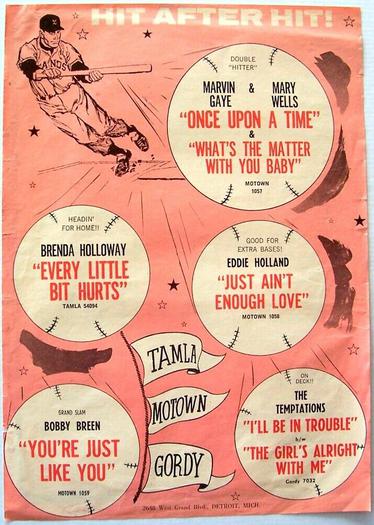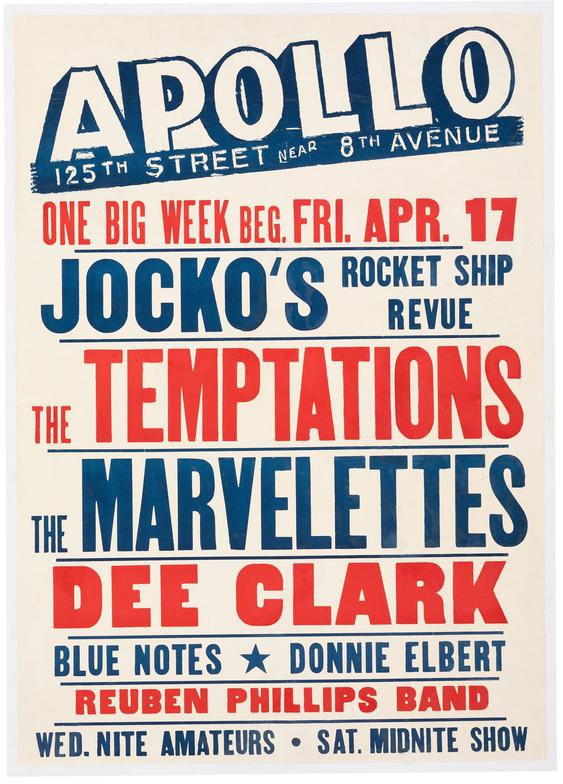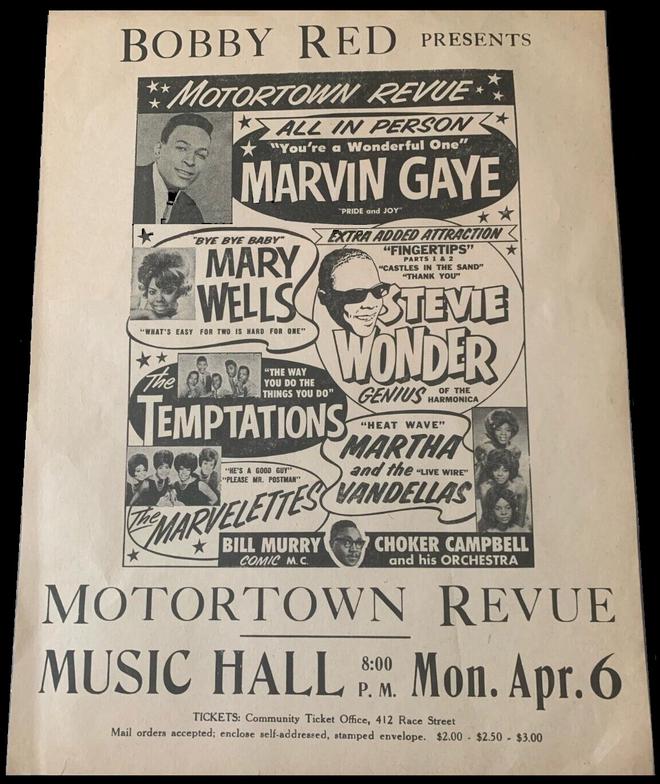Splatt Gallery
Double click here to add text.
Splatt Gallery's History of Michigan Music Posters
Volume Two: 1964 to 1966
A poster for Gerde’s Folk City in NYC with John Lee Hooker in a two-week engagement, January 19, 1964 through the end of the month.
*******************************************************
Poster for an Autorama show in Hartford, Connecticut, February 19-23, 1964, featuring Stanley Mouse painting his Monster shirts.
A January 20, 1964 ad for WXYZ Radio in Detroit, Michigan with DJ’s Fred Wolf, Paul Winter, Joel Sebastian, and Lee Allen enacting the station’s “All American” theme.
One of the best of the “teen clubs” was Daniel’s Den which opened in 1964 in Saginaw, Michigan. A good synopsis of this ground-breaking venue is found here:
https://www.michiganrockandrolllegends.com/dr-js-blog/127-daniels-den-60s-teen-club
America was totally indifferent towards The Beatles as the group was taking over the UK in 1962 through 1963. Capitol Records, as the US subsidiary of EMI, had the rights to their records but continually turned them down, leading to their early US releases being on the small labels, Vee-Jay and Swan.
Finally, in December, 1963 the US record industry’s interest perked up when it was reported that the Beatles new single "I Want To Hold Your Hand" had attained one million in advance orders (and was still not enough to dislodge their current single "She Loves You" from the #1 spot on the UK charts). And when Ed Sullivan agreed to book the group on his show, it was an eleventh hour scramble to catch up with what the rest of the world had known for over a year - the Beatles were money makers.
Capitol budgeted $40,000 for marketing (nearly ten times the normal amount), and enlisted all the other record company's pressing plants to pull the release of “I Want To Hold Your Hand” ahead by two weeks. Check out this insanely detailed, raving memo that they sent out to the distributors on how to properly allocate all of the stickers, buttons, and Beatles wigs that they were going to be dumping on them - http://www.rarebeatles.com/photopg2/comstk.htm
The Beatles appeared on the Ed Sullivan show on February 4, 1964, setting a viewing audience record of 75 million. On April 4, 1964, the Beatles held all five of the top five positions on the Billboard Hot 100 chart, a feat that is likely to never be repeated.
The Beatles – I Saw Her Standing There (1963)
https://www.youtube.com/watch?v=kXieo_hfqbU
Poster/ad for Nina Simone and Herbie Mann at Oakland University in Rochester, Michigan on February 23, 1964.
An ad for a “Battle of the Stars” at the Graystone Ballroom, Detroit, Michigan between the Velvelettes and the Supremes on February 29, 1964.
The February 1964 edition of Playboy magazine’s annual All-Star Jazz Band, with the collage illustration by Beatrice Paul. The line-up, which hadn’t changed much from the previous year, featured band leader Henry Mancini, in the position he would keep all the way up to 1970, Dave Brubeck would be on piano up to 1971, Lionel Hampton, apparently the only known musician who played Vibes, would hold on to that instrument position at least up through 1975, and the horn section, which in-explicitly included four trombones, would remain essentially unchanged for just as long.
Volume Two - 1964 to 1966 - continues - HERE
Newspaper ad for Peter, Paul & Mary at Masonic Auditorium on March 1, 1964. It was the New York trio’s third Michigan appearance.
A great ad for the Smothers Brothers at Hill Auditorium in Ann Arbor on February 29, 1964.
An ad for Shelly's Manne-Hole in Hollywood, California with Art Blakey & the Jazz Messengers, featuring Detroit trombonist Curtis Fuller, for ten nights, February 27, 1964 through March 8th.
Newspaper ad for the fourth annual ONCE Festival in Ann Arbor ran from February 25, 1964 through March 1st.
The scandalous poster for the fourth annual ONCE Festival in Ann Arbor, February 25, 1964 through March 1st. For an exhaustively detailed history of the ONCE festivals, see here:
https://nwr-site-liner-notes.s3.amazonaws.com/80567.pdf
The town of Ann Arbor is about 40 miles west of Detroit, but in many ways, it is on another planet. The ONCE Festivals were the world’s major avant-garde music event from 1961 to 1966, spinning off the acclaimed Ann Arbor Film Festival in 1963, which continues to this day.
The fourth annual ONCE Festival in Ann Arbor ran from February 25, 1964 through March 1st, with a poster designed by Mary Ashley, featuring Martina Algire of the Detroit Artists Workshop, was purposely “scandalous”.
Ashley, together with her husband, composer and co-founder of the festival Robert Ashley, expanded the 1964 event into a touring group.
Robert Ashley – In Memoriam Crazy Horse (1964)
https://www.youtube.com/watch?v=9kQ5SqZ0lF0
An ad for Bob Dylan records in the February 21, 1964 edition of the Michigan Daily newspaper in Ann Arbor, along with an adjacent ad showing the possibilities awaiting within a record shop Listening Room.
One more Stanley Mouse design from 1964.
Pages from a 1964 Auto Show program book with Stanley Mouse ads, along with three designs from 1964.
An ad for Hank Ballard & the Midnighters at the Peppermint Lounge in Miami, Florida, on February 15-18, 1964.
A full-page Motown Records ad in the February 8, 1964 issue of Billboard magazine for the Mary Wells single “What’s Easy For One is Hard For Two” and Eddie Holland’s “Leaving Here”, which would later be covered the Rationals.
Eddie Holland – Leaving Here (1963)
https://www.youtube.com/watch?v=Gqd7wNExd_4
An ad for Lou Rawls at the Grand Bar in Detroit for ten nights, February 7-16, 1964, with his latest album at the time.
An ad for comedian Dick Gregory at Hill Auditorium in Ann Arbor on February 1, 1964.
A record store ad for “Meet the Beatles”, the first American album by the Beatles, in the January 21, 1964 edition of the Michigan Daily newspaper in Ann Arbor, just one day after its official release on January 20th. The album hit #1 on the Billboard 200 albums chart on February 15th, and held the top spot for eleven weeks before being replaced by “The Beatles' Second Album”.
The 20 Grand in Detroit started off the year, January 1-5, 1964 with singer Arthur Prysock, pretty close to his 175th Detroit show, the Vibrations from L.A. in their Detroit debut, January 10-19, with the "Godmother of Detroit Soul" Johnnie Mae Matthews opening those shows in a rare live performance away from working on her record label, Northern Recording Company. Ending out the month saw Jimmy McGriff, January 24 through February 2nd, returning after 20 shows at the 20 Grand in 1963.
An ad for John Lee Hooker in Kansas City on January 24, 1964. Hooker’s twentieth, or so, album “Burning Hell” was released in 1964, along with a concert recording from July 1963, “Concert at Newport”.
Poster by an unknown artist for a “Battle of the Stars” show at the Graystone Ballroom, March 7, 1964.
An ad for jazz harpist Dorothy Ashby at the Chambertin Lounge in Dearborn, Michigan on March 11, 1964. It was the start of a 65-night residency that ended on June 27th.
An ad for the Drome Lounge in Detroit, with Pepper Adams and Terry Pollard for seven nights, March 9-15, 1964.
An ad for Birdland in NYC with saxophonist Wild Bill Moore and Kim Weston appearing March 6-8, 1964.
An ad for Odetta at Hill Auditorium in Ann Arbor on March 14, 1964.
An ad for singer/songwriter Brook Benton at Club Alamo in Detroit for ten nights, March 12-22, 1964, giving him over 60 Detroit appearances.
A full-page Tamla/Motown Records ad in the March 14, 1964 issue of Billboard magazine, with the Supremes’ 8th single, “Run, Run, Run”, which would mark the end of their “losing streak”, their next five records would all go to #1.
“Run, Run, Run” was the second Supremes single written and produced by Holland–Dozier–Holland.
The Supremes – Run, Run, Run (1964)
https://www.youtube.com/watch?v=BbFDVWofYW4
The Beatles arrived in America on February 7, 1964 for their debut performance on the Ed Sullivan TV show on February 9th. Previous to this, Americans had first seen the group in a four-minute report on the Huntley-Brinkley Report newscast on November 18, 1963. Another five-minute report was broadcast on the CBS Morning News on November 22nd, a scheduled repeat on the evening news program was pre-empted by the news of the assassination of President John F. Kennedy.
Walter Cronkite ran the piece on the evening news on December 10th. Jack Paar scooped the planned Sullivan show appearance by running footage from the BBC on his show on January 3, 1964, “as a joke”, but that was the extent of America’s exposure to the band before the February 9th Sullivan show.
After drawing a record audience for a TV show, with 73 million viewers, the Beatles performed their first proper US concert in Washington DC on February 11, followed by their second concert the next day at Carnegie Hall in New York City. On February 16th, a second Ed Sullivan appearance was broadcast from a live concert in Miami Beach, Florida. On February 22nd, the Beatles returned to England, one day before a third Sullivan broadcast on the 23rd, from a taping that had been made, but not broadcast, during their first appearance on the 9th.
Two days after their appearance on The Ed Sullivan show, The Beatles performed their first US concert in Washington DC, on February 11, 1964. The concert was filmed and later transmitted over telephone lines as a closed-circuit broadcast to selected theaters, including the Fox Theatre and the State Fair Coliseum in Detroit, over the weekend of March 14-15, 1964, something that had been done previously for boxing matches, but for the first time for a rock concert. The promoter, Theater Color Vision, raked in an estimated $4 million (roughly $30 million in today’s dollars).
The above poster has two Detroit locations for the closed-circuit broadcast, the Fox Theatre and the State Fair Coliseum. It would be nearly six months later until the Beatles made their Detroit live debut.
A full-page Motown Records ad in the March 21, 1964 issue of Cash Box magazine with singles by the Temptations, Marvin Gaye, Little Stevie Wonder, the Miracles, and the Contours, and the company’s first Greatest Hits album.
A full-page Brunswick Records ad in the March 21, 1964 issue of Cash Box magazine for the single “Call Her Up/The Kickapoo” by Jackie Wilson.
An ad for Della Reese, in a rare (by then) hometown appearance, at the Grand Bar in Detroit, March 27-29, 1964. It will be another four-and-a-half years until her return to a Detroit stage.
John Lee Hooker had his own touring Revue shows, as seen on this Tilghman Press poster for March 28, 1964. All of the support acts seem to have a relation to Redbug Records in Dayton, Ohio. This is the only tune we’ve managed to track down, but it’s a corker.
Lee Roye – Tears (Nothing but Tears) (1968)
https://www.youtube.com/watch?v=K9Bnp_7hb0I
Long-time readers know how we always suspect a concert poster that lists the year of the show, but this one, from March 28, 1964, is so obscure that it has to be authentic. We have been able to confirm the location of the Local 157 Hall, but we cannot find anything on the dynamic Impassions, song stylist Tammie White, exotic dancer Chari Quencee, or Turk & the Vibratones. The poster was made by the Detroit Tribune Publishing Co., the Tribune was Michigan’s “oldest colored weekly newspaper”. We say this is as real as it gets.
“A Basket of Easter Dance Stars at the Graystone Ballroom in Detroit, Michigan, Easter Sunday, March 29, 1964.
This image comes from the highly recommended excellent website Soulful Detroit found here:
https://soulfuldetroit.com/atdasd_headlines.php
An ad for Mouse Decals in the April 1964 issue of Car Model magazine, along with a detail of the “Sometimes It Hurts To Shift” decal. Stanley Mouse working from a post office box in Dearborn, Michigan.
The 20 Grand club in Detroit provided a nearby stage to Hitsville for Motown performers to refine their acts, such as the Miracles from April 3, 1964 through April 12th, followed by Marvin Gaye and the Spinners from April 17 through April 26th.
An ad for the opening of the Showboat in Detroit on April 1, 1964. Mugsy Spanier led the house band that performed about 80 shows through the end of June.
The Motortown Revue was back on the road, with Nashville, Tennessee on April 5, 1964, Cincinnati, Ohio on April 6th, and Indianapolis, Indiana on April 7th.
When the Beatles’ sixth single “Can’t Buy Me Love” hit the #1 spot on Billboard Magazine’s Hot 100 singles chart on April 4, 1964, they made chart history. It was their third consecutive #1 single, as "Can't Buy Me Love" replaced "She Loves You", which had replaced "I Want to Hold Your Hand", a feat unmatched by any other artist.
It is also the only time that an act has held the top five spots simultaneously. During its second, of five, weeks at #1, the Beatles had fourteen songs on the Hot 100 at the same time.
Ed Wingate was already a successful businessman in Detroit when he decided to start a record company. Noting what he thought was a lack of professionalism in this particular industry, he modeled his new company, Golden World Records, along the lines of what he saw Berry Gordy doing over at Motown. Wingate started the label with his wife Joanne Jackson Bratton in 1962. They released about a dozen singles by soul singers Sue Perrin, Willie Kendrick, the Adorables, and Patti Gibson, and rockers Joyce Webb, Leroy Smalley, and Rocky Hart.
One of the first groups that he signed was a white doo-wop group from Livonia, Michigan called The Reflections. He gave them a song written by his staff writers called “(Just Like) Romeo & Juliet” which the band unanimously hated, but eager for a record contract, they agreed to record the song. When they arrived at the studio and heard the backing instrumentals that had already been recorded, they thought it sounded great, no doubt due it having been played by a group of moon-lighting Motown Funk Brothers.
The record was released in February 1964, got played on CKLW radio which led to it becoming a national hit, entering the Billboard Hot 100 singles chart on April 11, 1964 (the second to last day of their engagement at Baker’s Keyboard Louge), and peaking at #6 on May 30, 1964. The record’s success got The Reflections invited to be part of Dick Clark’s Caravan of Stars tour. James Brown also loved the record and took them on tour with his show, ending with a well-received performance at the legendary Apollo Theater.
The Reflections – (Just Like) Romeo & Juliet (1964)
https://www.youtube.com/watch?v=ycCZX-olchU
An ad for the Reflections at Baker’s Keyboard Lounge in Detroit, April 6, 1964 through April 12th. The ad was a bit ambitious about “the Nation’s No. 1 song”, but “(Just Like) Romeo & Juliet” did enter the Billboard magazine Hot 100 chart on April 11th, and peaked at #6 on May 30th.
A poster/flyer by an unknown artist for Joan Baez, in her third Michigan appearance, at the Masonic Auditorium in Detroit, April 12, 1964.
An ad for Johnny Nash at Club Alamo in Detroit, April 13-18, 1964, notable for being the second, and final, Detroit visit by singer Johnny Nash (the first was six nights at the Flame Show Bar in 1962), and for being the final show at Club Alamo, 150 shows since October 1949.
Nash was an early collaborator with Bob Marley, a relationship that began in 1967. His biggest hit was eight years in the future, with the 1972 single and album “I Can See Clearly Now”. Nash composed, produced and performed the #1 hit.
Johnny Nash – I Can See Clearly Now (1972)
https://www.youtube.com/watch?v=g_rB4v75jqU
A Tamla Motown Gordy Records ad in the April 11, 1964 issue of Billboard magazine for the singles:
“The Way You Do the Things You Do” by the Temptations, their seventh single and first #1 on the R&B Singles chart, just missing the Top Ten on the Hot 100 chart, peaking at #11.
“You’re A Wonderful One” by Marvin Gaye, his eighth single and second highest charting, after 1963’s “Pride And Joy”.
“My Guy” by Mary Wells, her tenth single, her third #1 on the R&B Singles chart, and her first #1, Motown’s third #1, on the Hot 100 chart.
“Can You Do It” by the Contours, their seventh single and their second highest charting single on the Hot 100 chart, although peaking at #41, a distant second from their 1962 hit “Do You Love Me” (#3 on the Hot 100 chart and their only #1 on the R&B Singles chart).
“In My Lonely Room” by Martha & the Vandellas, their eighth single, their second highest charting single on the R&B Singles chart.
April in Detroit is the start of Tiger baseball, and “hits” become a double entendre. This Motown Records ad from April 14, 1964, has Tamla, Motown, and Gordy pennants waving in the breeze from the flying baseballs, launched by a pretty strong bunter, and each ball carries the name of five singles (another double entendre), by Brenda Holloway, Eddie Holland, the Temptations, Bobby Breen, and Marvin Gaye & Mary Wells.
April in Detroit is the start of Tiger baseball, and “hits” become a double entendre. This Motown Records ad from April 14, 1964, has Tamla, Motown, and Gordy pennants waving in the breeze from the flying baseballs, launched by a pretty strong bunter, and each ball carries the name of five singles (another double entendre), by Brenda Holloway, Eddie Holland, the Temptations, Bobby Breen, and Marvin Gaye & Mary Wells.
A Motown Records ad with a fold-out flap for the duet album by Marvin Gaye and Mary Wells, released on April 15, 1964.
A poster with the Temptations and the Marvelettes appearing at the Apollo in Harlem, NYC beginning on April 17, 1964, just four days after the release of the Temptation’s debut album, “Meet the Temptations”.
Poster for the Motortown Revue in Cincinnati, Ohio on April 6, 1964.


